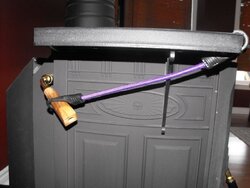Not sure what you mean by primary air. You mean the draft slider, right?
Yes - your slider is the adjustment for primary air. Basically the stove has two sources of air. Primary - adjustable and secondary - non adjustable (I assume the "firedome" design also requires secondary air like a tube re-burn).


